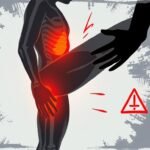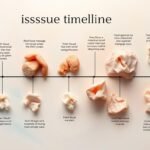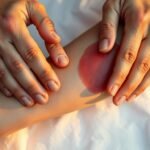I’ve had my share of muscle strains, and they’re really tough to deal with. Whether you’re an athlete or just overdid it at the gym, pulled muscles are serious. In this guide, I’ll share what I’ve learned about treating muscle strains and recovering from them.
Muscle pulls can happen to anyone. They happen when we lift too much, move the wrong way, or get hurt in sports. Rest is important for healing, but there’s more to it than just sitting around. The right steps can help you recover faster and better.
It’s important to know how bad your strain is. Acute strains have inflammation and might show bruises. These usually heal in a few weeks with the right care. Chronic strains, however, can cause ongoing weakness and poor blood flow. They might take months or years to develop, with pain that comes and goes.
So, should you massage a pulled muscle? It’s not a simple yes or no. In the first 48-72 hours, deep tissue massage can make things worse. But after that, some massage techniques can help your healing and prevent future injuries.
Key Takeaways
- Rest is crucial for muscle recovery, especially in the first 72 hours
- Cold therapy helps reduce inflammation in acute strains
- Heat therapy can benefit chronic strains by promoting blood flow
- Massage can aid recovery, but timing is critical
- Proper warm-up and body mechanics can prevent future strains
Understanding Muscle Strains and Their Severity
Muscle strains are common injuries that can happen to anyone, no matter how active they are. These injuries range from mild over-stretching to severe tearing. Back, calf, and hamstring strains are among the most common.
What Defines a Muscle Strain
A muscle strain happens when muscle fibers stretch or tear. People with tight muscles or those who skip warm-ups are at higher risk. Jobs that involve repetitive movements can also lead to chronic strains, showing the importance of injury prevention tips at work.
Different Grades of Muscle Pulls
Doctors categorize muscle strains into three grades:
- Grade 1 (Mild): Minimal impact on strength and motion
- Grade 2 (Moderate): Less strength, possible swelling, 2-3 month recovery
- Grade 3 (Severe): Significant pain, swelling, and bruising; may require surgery
Common Symptoms and Signs
Signs of a muscle strain include:
- Pain and stiffness
- Swelling and bruising
- Decreased muscle function
- Difficulty bending or straightening the injured area
If these symptoms don’t get better or get worse, it’s important to see a doctor. Getting a proper diagnosis helps find the right treatment and prevents further damage.
“Most soft tissue injuries, including muscle strains, take a few weeks to heal, but severe strains may take longer.”
Understanding muscle strains is crucial for effective treatment and prevention. Recognizing symptoms early and using the right care can help speed up recovery and lower the chance of getting hurt again.
Should You Massage a Pulled Muscle: Timing and Safety
Timing is key when you have a pulled muscle. Massage can help, but it’s important to know when and how to do it safely.
The Critical First 72 Hours
The first 72 hours after a muscle strain are very important. It’s best to avoid massage during this time. Too much pressure too soon can make the injury worse by causing more bleeding and swelling.
Instead, rest and ice therapy are good for reducing inflammation.
When Massage Can Help Recovery
After the initial phase, gentle massage can help. Light self-massage can improve blood flow and lower muscle tension. For athletes, weekly massages can keep muscles in good shape and prevent injuries.

Contraindications and Risk Factors
Massage is not always a good idea:
- Acute muscle ruptures or partial tears
- Severe strains with significant swelling
- Infections or skin conditions in the affected area
- Recent alcohol consumption, which can make symptoms worse
Deep tissue massage without proper assessment can make injuries to tendons, ligaments, or other soft tissues worse.
| Timing | Recommended Action | Benefit |
|---|---|---|
| 0-72 hours post-injury | Avoid massage, apply RICE | Reduce inflammation |
| After 72 hours | Light massage | Improve blood flow |
| 2+ weeks post-injury | Regular massage therapy | Enhance muscle regeneration |
Recent studies show that gentle, consistent force on injured muscles can double muscle regeneration and reduce scarring. This approach can lead to better strength recovery and less inflammation if done right.
Effective Treatment Methods for Muscle Recovery
When you get a muscle strain, picking the right treatment is key. I’ll show you some top ways to get back on track after an injury.
PRICE Protocol Implementation
The PRICE protocol is a top choice for muscle strains. It means Protection, Rest, Ice, Compression, and Elevation. It works well in the first 72 hours after injury.
Protecting the area stops more damage. Rest lets the muscle heal. Ice cuts down on swelling, compression does the same, and elevation lowers blood flow.
Heat vs. Cold Therapy Applications
Heat or cold therapy depends on your injury’s stage. Cold is best for new injuries to reduce swelling. Use ice for 20 minutes every hour when awake.
For long-term strains, moist heat boosts blood flow and healing. But, avoid dry heat as it can dry out tissues.
Professional Treatment Options
For serious strains, you might need a pro’s help. Physiotherapists use many techniques to aid recovery. These include deep tissue massage, ultrasound, and muscle stimulation.
Myofascial release is also great for muscle strains. It works on the tissue around muscles to ease tension and boost flexibility. Used with other treatments, it can really help your recovery.
| Treatment Method | Benefits | Best For |
|---|---|---|
| PRICE Protocol | Reduces inflammation, minimizes swelling | Acute injuries (first 72 hours) |
| Cold Therapy | Decreases inflammation, numbs pain | Acute injuries, immediate treatment |
| Heat Therapy | Increases blood flow, promotes healing | Chronic strains, after initial inflammation |
| Deep Tissue Massage | Relieves muscle tension, improves circulation | Chronic strains, later stages of recovery |
Choosing the right treatment at the right time is key to muscle recovery. By using these methods and home massage techniques, you can recover faster and get back to your activities sooner.
Advanced Recovery Techniques and Therapies
I’ve looked into advanced ways to manage sports injuries and treat muscle strains. These methods offer better results for athletes and fitness fans.
Deep Tissue Massage Benefits
Deep tissue massage reaches deeper muscle layers, which might help with movement. Research shows mixed results, but some studies suggest benefits:
- Reduces overall muscle tension
- Promotes relaxation crucial for healing
- May interrupt pain signals to the brain
- Improves circulation, delivering oxygen and nutrients to injured areas
Each session lasts 30-60 minutes, with sessions once or twice a week at first. But, it’s key to remember that massage hasn’t always shown clear benefits in muscle damage signs like soreness and recovery of force.
Therapeutic Ultrasound Treatment
Therapeutic ultrasound uses high-frequency sound waves for muscle strain treatment. It aims to lessen inflammation and aid in healing for both new and long-term injuries. Though its effectiveness is still up for debate, some find it useful in managing sports injuries.

Electronic Muscle Stimulation
Electronic muscle stimulation (EMS) is becoming more popular in sports injury management. It works by:
- Pumping out inflammation
- Reducing pain
- Potentially strengthening muscles
EMS shows promise, but more research is needed to fully grasp its effects on muscle strain treatment and recovery times. Always talk to a healthcare professional before adding these therapies to your recovery plan.
Conclusion
I’ve looked into how to recover from pulled muscles and prevent injuries in this guide. Understanding muscle strains and using the right treatments is key. Massage therapy is especially important in the first 72 hours after an injury.
Studies suggest massage doesn’t greatly improve strength or endurance. But it does help a bit. Sports massage can improve blood flow to injured muscles. This might speed up healing and cut down recovery time.
It also helps a little with flexibility and can lessen muscle soreness after exercise. Always follow the PRICE protocol for pulled muscle recovery. Techniques like deep tissue massage and ultrasound can help too.
For the best recovery and prevention, talk to healthcare experts. They can guide you, especially with severe or ongoing strains. By doing this, you’ll be ready to handle muscle injuries and stay healthy.
FAQ
Should I massage a pulled muscle immediately after injury?
When is it safe to start massaging a pulled muscle?
What are the different grades of muscle strains?
How can I tell if I have a pulled muscle?
What’s the best immediate treatment for a pulled muscle?
Should I use heat or cold therapy for my muscle strain?
What professional treatments are available for pulled muscles?
How can I prevent muscle strains?
Is deep tissue massage beneficial for chronic muscle strains?
How long does it typically take for a pulled muscle to heal?
Source Links
- Deep Tissue Massage For Injury? When It’s Great and When to Wait! – https://bodyworksdw.com/blogpost/deep-tissue-massage-for-injury/
- How to Recover from a Strained or Pulled Muscle: 9 Steps – https://www.wikihow.com/Recover-from-a-Strained-or-Pulled-Muscle
- How to Treat and Manage a Pulled Muscle at Home – https://biofreeze.com/articles/manage-treat-pulled-muscle-pain/
- The Basics of Muscle Strains – https://www.webmd.com/fitness-exercise/muscle-strain
- 6 Muscle Strain Treatments You Need to Know – https://blog.gameready.com/blog/6-muscle-strain-treatments
- Muscle strain: Symptoms, diagnosis, treatment, and recovery – https://www.medicalnewstoday.com/articles/324642
- Massage timing: Doesn’t matter WHEN but it does matter WHEN NOT! | POGO Physio Gold Coast – https://www.pogophysio.com.au/blog/massage-doesnt-matter-when-but-it-does-matter-when-not/
- Massage helps injured muscles heal faster and stronger — Harvard Gazette – https://news.harvard.edu/gazette/story/2021/10/massage-helps-injured-muscles-heal-faster-and-stronger/
- The Best Ways To Recover From A Pulled Muscle – https://www.piedmont.org/living-real-change/how-to-recover-from-a-pulled-muscle
- Treating Muscle Strain – https://www.healthline.com/health/muscle-strain-treatment
- 4 Proven Ways to Speed Up Muscle Injury Recovery | Panther Sports Medicine – https://panthersportsmedicine.com/blog/4-ways-to-speed-up-muscle-injury-recovery/
- Alternative treatments for muscle injury: massage, cryotherapy, and hyperbaric oxygen – https://pmc.ncbi.nlm.nih.gov/articles/PMC4596174/
- How Massage Can Help Speed Up Recovery From Injury — Spa Theory – https://www.spatheory.com/spa-theory-wellness-beauty-blog/injury-recovery-massage
- The mechanisms of massage and effects on performance, muscle recovery and injury prevention – PubMed – https://pubmed.ncbi.nlm.nih.gov/15730338/
- Muscle Strain | Let Us Help You Recover | SN CLINIC – https://snclinic.co.uk/muscle-strain-massage-treatment/
- Effect of sports massage on performance and recovery: a systematic review and meta-analysis – https://bmjopensem.bmj.com/content/6/1/e000614













2 Comments
Interesting read! Id argue though, isnt a Grade 3 muscle pull too severe for a simple massage therapy?
Does anyone else think that the grading of muscle pulls seems a bit vague? It could use more specific criteria.